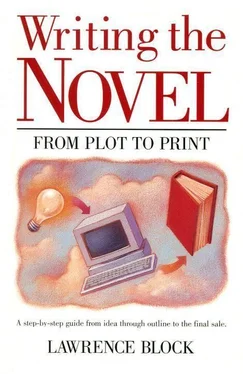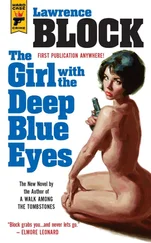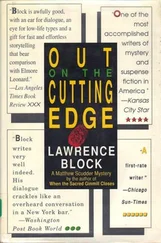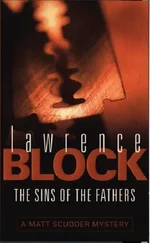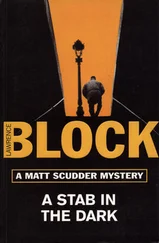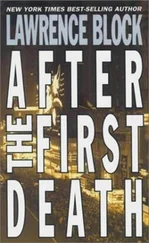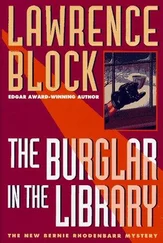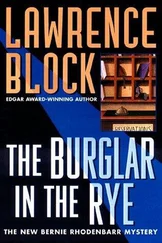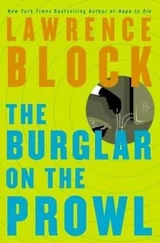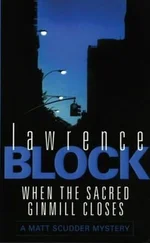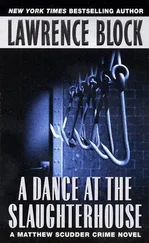With Deadly Honeymoon, I could fit the book’s premise into one sentence, and that was as much of a handle as I had on the book when I sat down and wrote the first chapter. I think now that I might have written a better book if I’d known more about the various characters and had given the plot more thought before I started, but I was impatient to get on with it, and it’s possible the book gained by the impatient enthusiasm that gripped its author.
One night Brian Garfield parked his car on the street in Manhattan and returned to it to find the convertible top slashed by some archfiend in human form who wanted to steal a coat from the back seat. Brian’s first reaction was murderous rage. He realized he couldn’t find the villain and kill him, but he could find some other villain and kill him, couldn’t he? Because Brian is a writer rather than a homicidal maniac — although admittedly the two classes are not mutually exclusive — he decided to write a book about someone so motivated rather than act out his anger directly.
He might have begun work immediately upon a book about a vigilante who goes around killing people after someone slashes his convertible top — and that’s not the worst premise for a book I’ve ever heard. But Brian gave the book plenty of time to take shape, let the character of accountant Paul Benjamin emerge from wherever our ideas grow, made the motivating experience the rape and beating of Benjamin’s wife and daughter by a trio of hoodlums, with the wife dying and the daughter shocked into madness, and let the story grow from there. The result, Death Wish, was an artistic success as a novel and an enormous commercial triumph as a film.
Don Westlake, on the other hand, once wrote a first chapter in which a surly fellow walks across the George Washington Bridge into New York, snarling at motorists who offer him rides. Don didn’t know where he was going with that one but found out as he went along. The result was the lengthy series of novels Don wrote under the pen name Richard Stark, all of them featuring Parker, a professional heist man and as unobliging a chap as he was the day he walked across the bridge.
As the years go by, which is something they do with increasing rapidity lately, I find myself giving ideas more rather than less time to take shape. I’m no longer so anxious to rush Chapter One through the typewriter if I have no idea what’ll happen in Chapter Two. One learns from experience, and I’ve had the experience of watching far too many first chapters wither on the vine to dismiss the possibility of its happening again. I’m less inclined to worry that an idea will evaporate if I don’t get it into production as quickly as possible. If I make a note of it so I won’t forget it, and if I read through my notebook from time to time and make it a point to think about what I find there, the good ideas will survive and grow. The bad ones will drop out along the way, and that’s fine; I don’t feel compelled to add to my stack of first-chapters-of-books-destined-never-to-have-a-second-chapter.
On the other hand, the next book I intend to write is one I’ve been thinking about for several months now, getting more and more of a sense of the lead character, considering and rejecting any number of geographical settings, changing my mind over and over again about the nature of the plot.
I got the idea, incidentally, by the serendipitous process that yields so many ideas. I was at the library, doing research on patron saints for the sake of a bit of conversational by-play in a light mystery novel, The Burglar Who Liked to Quote Kipling. This led me to a passage from Aquinas that amounted to a marvelous moral justification for larceny. Then, because I was tired of saints, patron or otherwise, I started browsing magazines, something I rarely do, and came across an interview with Dennis Hopper. I felt I really ought to go home and get to work, but I felt self-indulgent that day and read the Hopper interview, and there was the idea for my next novel, just waiting there for me to find it. (I won’t tell you what it is — I don’t want to leave my fight in the gym.)
Anyway, I expect I’ll start writing the book in a couple of months. I know the book will have benefited greatly from the time I’ve spent thinking about it off and on ever since I read that interview. But I’m quite certain that I won’t know very much about the direction the plot will take. I’ll have my first chapter pretty well worked out in my mind, and I’ll know a lot about the characters, and I’ll have a variety of possible directions for the book to go, but...
But I won’t be able to sit down and paint the thing by numbers. That’s what makes it hard, no matter how much plotting time you give a book, but it’s also what keeps it exciting.
Chapter 5
Developing Characters
Drawing characters from real life. Making up characters from the whole cloth. How to make your characters memorable
The chief reason for almost any reader to go on turning the pages of almost any novel is to find out what happens next. The reason the reader cares what happens next is because of the author’s skill at characterization. When the characters in a novel are sufficiently well drawn, and when they’ve been so constructed as to engage the reader’s capacities for sympathy and identification, he wants to see how their lives turn out and is deeply concerned that they turn out well.
The books that I don’t finish reading — and their numbers increase with the years — are generally abandoned along the way for one of two reasons. Sometimes the writer’s style puts me off; because I’m a writer myself I’ve become increasingly aware of literary technique, much as a professional musician will notice sour notes and technical flaws that would escape my attention. Unless theme or story line or characters have a great hold upon me, I’ll lose interest in an inexpertly written novel.
If the writing’s competent, my interest may flag nevertheless if I find that I just don’t give a damn whether the characters live or die, marry or burn, go to the Devil or come out the other side. This may happen because I just don’t believe in the characters the author has created. They don’t act like real people, they don’t sound like real people, and they don’t seem to have the emotions or thoughts of real people. Thus they’re unreal as far as I’m concerned, and I say they’re spinach and the hell with them.
Note, please, that my complaint is that these wooden characters don’t seem like real people, not that they aren’t ordinary people. Some of the most engaging characters in fiction, clutching my attention as the Wedding Guest hung on to the Ancient Mariner, have been the farthest thing from ordinary. Nothing about Sherlock Holmes is ordinary, yet the character’s appeal has been such as to keep the Conan Doyle stories in print to this day, and to have Holmes resuscitated and brought back to life in several novels by contemporary authors, novels which owe their success almost entirely to public enthusiasm for Conan Doyle’s eternally fascinating character.
Similarly, I’ve found Rex Stout’s books about Nero Wolfe endlessly rereadable. There’s nothing ordinary about Wolfe, and it’s not only his corpulence that makes him larger than life. I don’t reread the books because their plots are so compelling, certainly not the second or third time around. Nor am I dazzled by Stout’s sheer writing ability; while it was considerable, I never got interested in his non-Wolfe books, either the mysteries starring other detectives or the several straight novels he wrote before creating Wolfe. No, I read him as I suspect most people do, for the sheer pleasure of watching the interplay between Nero Wolfe and Archie Goodwin, of seeing these two men react to different situations and stimuli, and of participating vicariously in the life of that legendary brownstone on West Thirty-fifth Street.
Читать дальше
